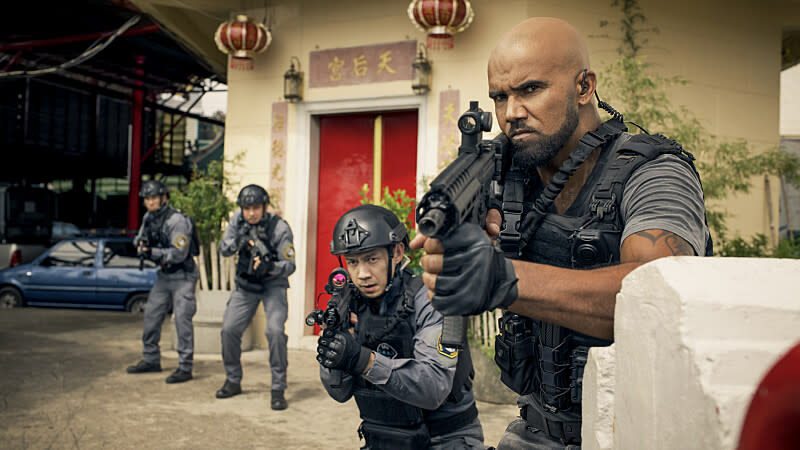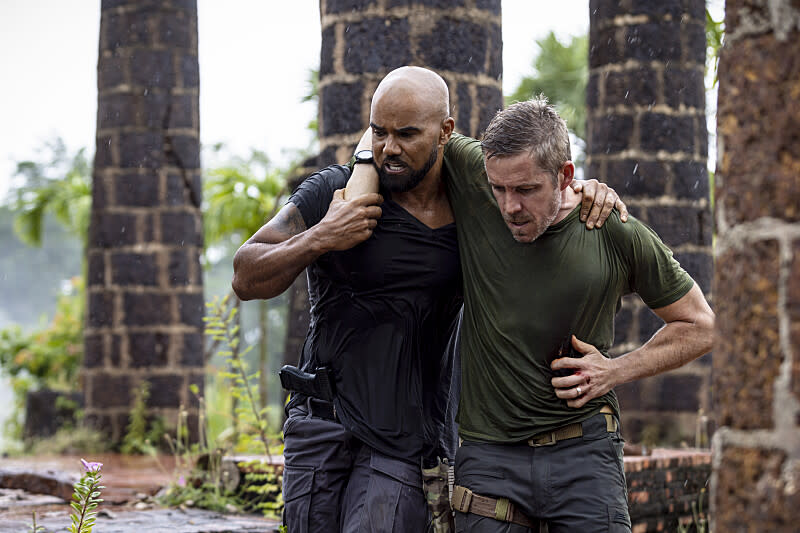The Stunt Work on ‘S.W.A.T.’ Is a Surprisingly Refreshing Throwback

Over six seasons, CBS’ “S.W.A.T.” has served up the kind of dynamic character-based action that used to be the bread-and-butter of theatrically released cop movies, eschewing the trend toward CGI and superheroes in favor of a more grounded approach that looks back to the urban action classics of Walter Hill and Richard Donner. “We really strive to do everything as real as possible,” stunt coordinator Austen Brewer told IndieWire. “There are cases where we have to lean on our VFX guys because a location won’t allow it, but if we can stage an explosion and not use CGI and it can be safely done, we will do that.”
That philosophy has served Brewer and his co-stunt coordinator Lance Gilbert well, as both of them are Emmy nominated for their work on “S.W.A.T.” For Gilbert, the striving for authenticity helps make the series not only visually dynamic but emotionally involving. “We’re not doing action just for action’s sake,” Gilbert told IndieWire. “We’re trying to keep the audience from pretending like they’re watching a video game by keeping it authentic and not over the top. These characters have skill sets, but they’re within the realm of what human beings can actually do.”
More from IndieWire
Season 6 began with two episodes filmed on location in Thailand that brought a fresh perspective to the show — and new challenges for the stunt department. “The [local S.W.A.T.] team we worked with was amazing, but there was a little bit of a transition getting to know them and their gear,” Brewer said. Some of the Thailand crew’s gear was particularly surprising — like a 40-foot bamboo pole used for one stunt. “One guy on the front end will hold the end of the pole, and you have three or four guys on the backside. The guy on the front will actually walk up the side of a building with the support of the guys [on the ground], which is something we had never done. To do it in a safe way we built a rig that cantilevered off the top of the building so we could drop a safety line to our guy who was going up the side.”
As is usually the case on “S.W.A.T.,” the schedule for conceiving and executing was tight. “In Thailand, we shot three full fights in one day. I think we had the location for seven hours, which is not much time at all.” According to Gilbert, the time constraints of network television are what make the job consistently fun but consistently challenging. “Whether it’s car work or fights, you’re always given a certain window of time,” he said. “On any particular day, you’re given 11 hours to shoot the call sheet — but you really only have an hour and a half to shoot the action.”
That’s where Brewer and Gilbert’s partnership comes into play, as the two coordinators have developed a system that not only yields great action but does so with efficiency. “What’s nice about working as a team is that we can break off and tackle a lot more than if there was just one of us,” Brewer said. “While one of us is rehearsing, the other one can prep for stunts coming up the following day.” According to Gilbert, the key to the partnership is that the best idea always wins. “We’re constantly bouncing ideas off of each other, and neither of us has an ego about who’s right or wrong,” he said. “Both of our ideas can be right, but one might be better on the day to create a better environment for the crew and a safer environment for the performers.”

One key to Brewer and Gilbert’s efficiency is the reference videos they shoot of rehearsals so that they can collaborate closely with the camera department. “Obviously there are limitations to that because we’re sometimes holding an iPhone and it’s easier for us to move around,” Brewer said, “but from there we work together to make it a little more exciting or decide to use a longer lens because we don’t want to put anybody that close to what’s going on.” The trust between the stunt and camera departments also allows the operators to get as close to the action as possible without getting into any real danger. “Sometimes they’ll want to sneak in a little bit closer handheld, and they know they’re pushing the boundaries of getting into a yellow zone or a red zone as far as safety is concerned,” Gilbert said. “They ask us, and then we allow them or suggest a lens change to give them a similar look while keeping them safe. We definitely work together super closely.”
At the end of the day, Brewer and Gilbert credit the other departments as well as their own stunt team with making “S.W.A.T.” not just successful but a pleasurable work environment. “We all work great together, and we all bounce ideas off one another,” Brewer said. “And Lance and I probably have the most fun on set of anyone. We really love what we do.”
Best of IndieWire
The 20 Best Spy Movies, from 'Enemy of the State' to 'North by Northwest'
Wes Anderson's Best Shots: 32 Perfect Images That Define the 'Asteroid City' Director's Career
Sign up for Indiewire's Newsletter. For the latest news, follow us on Facebook, Twitter, and Instagram.

 Yahoo News
Yahoo News 
